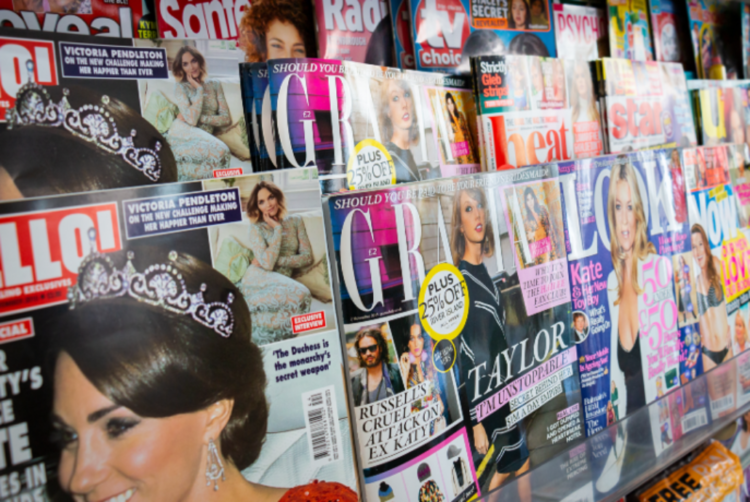Consumer ABCs 2023: Magazine circulations trend downwards despite growth in some titles

Consumer ABCs 2023
Print and digital magazine circulations broadly continued to decline in 2023 — a continuation of longer-term trends.
Circulations were boosted by a surge of interest in specialist titles amid pandemic lockdowns in 2020 and 2021. In 2022, that short-term trend began reversing, although some titles showed a high degree of resilience.
In 2023, while individual titles such as BBC Science Focus, Closer and Heat managed to grow total circulations, on the whole magazines showed a decline as falls in print outweighed growth in digital for most titles.
In a statement accompanying the ABC report, PPA CEO Sajeeda Merali nevertheless expressed optimism about the current state of magazine publishing, noting that 96% of the trade body’s publishers operate across five or more channels, implying that an over-focus on print figures does not take into account the broader strategies that publishers are taking to reach audiences and drive revenue growth. For instance, according to the latest PPA Market Report, events now account for 20% of publisher revenues.
“Quality interactions with consumers who love and actively seek out brand interaction is what makes the sector a valuable channel for commercial partners looking to create meaningful connections to achieve specific marketing objectives,” Merali said.
Five key takeaways
>> With one exception (Condé Nast’s Vanity Fair), women’s lifestyle magazines universally grew their digital circulations in 2023, often by double digits. However, Vanity Fair was the only title in this category to retain growth in print circulation.
>> Immediate Media’s BBC Science Focus was a standout among men’s lifestyle magazines, thanks to an impressive 163.2% digital circulation growth; the title has nearly tripled its digital circulation since 2022. Despite declining print circulations, Hearst UK’s Men’s Health and Condé Nast’s Wired grew total circulation in 2023 as a result of significant digital growth.
>> Among women’s weeklies, two magazines boosted total circulation in 2023 — Bauer Media’s Closer and Heat — again due to high double-digit digital growth, despite continued print declines.
>> Home interest magazines broadly saw declines in circulation in a reversal of post-pandemic fortunes. Many titles saw a spike in circulation amid Covid-19 lockdowns, as readers showed increased interest in improving their home and gardening while at home. In 2022, many home interest magazines began to see circulations recede, but some showed resilience. In 2023, circulations declined almost universally, although for some titles, like RHS Media’s The Garden, total circulations are still elevated.
>> News and current affairs magazines saw a dip in circulation, with a few exceptions among digital figures. Market leader The Economist saw drops in both digital and print, while print-only Private Eye saw a mid-single-digit decline in circulation after growing last year.
Analysis: Still a place on the media plan
The decline in print magazine circulation should come as little surprise as consumers continue, as they have for well over a decade, to migrate their consumption to digital formats. However, generally broad declines in news and current affairs magazines, as well as some special interest titles, bode poorly for a sector that has seen a spike in lay-offs in recent months.
Media agency planners insist there is still a place for magazines — both in print and digital formats — on the media plan, even if the pie is perhaps shrinking.
Christian Taylor, head of planning at independent media agency The Kite Factory, acknowledged that client interest in print media more broadly has “declined in line with their circulations”.
“The medium continues to have a place for brands with older audiences and we advocate the value of magazines as a trusted medium that can be effective at driving business effects,” he told The Media Leader. “Some spend has moved to these publishers online, but this is mainly bought programmatically. As such, there is less revenue flowing directly to these publisher brands and the emphasis is less on the title and more about the audience.”
Taylor explained that, rather than simply moving spend like for like from print to digital news brands, spend that previously went to print magazines is also going towards TV budgets, where he said comparable older audiences remain cost-effective to reach in the current market.
Brogan Meaney, publishing senior executive at Goodstuff Communications, painted a rosier picture, calling demand from clients for a presence in magazines “healthy” and that print magazines “remain important to any client strategy, as they allow us to tap into passion points and more niche demographics”.
Digital investment paying off
Still, the shift to digital has been clear for more than a decade. Vanessa Doyle, head of publishing at IPG Mediabrands’ Magna, noted that the successes of publishers’ significant investment in digital is paying off through improvements in digital subscriber growth at many titles, even if total circulations may be declining for most.
Doyle added: “Whilst some of our clients are taking a more sporadic approach to print advertising with fewer ‘always on’ campaigns, we still see brands turning to trusted publishers to offer legitimacy in a safe, high-quality, relevant environment, often when campaigns need to be delivered at speed.”
Citing new data from magazine marketing body Magnetic, Meaney noted that digital copies of magazines grew 19% in the last year. To help make up for the relative lack of ad revenue in digital compared with print, subscriptions also now make up 32% of magazine market circulations. For Meaney, this shows that “community-building is working and reveals a growing group of people who are actively choosing to pay for content that interests them and is from a trusted source”.
She continued: “There will always be a demand for trusted and quality journalism, such as that delivered by magazines. However, the format in which this is consumed is continuing to evolve — and publishers with it.”
Read more about each ABC category:
>> TV listings




